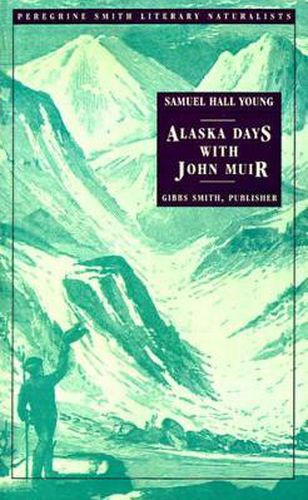Readings Newsletter
Become a Readings Member to make your shopping experience even easier.
Sign in or sign up for free!
You’re not far away from qualifying for FREE standard shipping within Australia
You’ve qualified for FREE standard shipping within Australia
The cart is loading…






Samuel Hall Young, a Presbyterian clergyman, met John Muir when the great naturalist’s steamboat docked at Fort Wrangell, in southeastern Alaska, where Young was a missionary to the Stickeen Indians. In Alaska Days With John Muir he describes this 1879 meeting: A hearty grip of the hand and we seemed to coalesce in a friendship which, to me at least, has been one of the very best things in a life full of blessings. This book, first published in 1915, describes two journeys of discovery taken in company with Muir in 1879 and 1880. Despite the pleas of his missionary colleagues that he not risk life and limb with that wild Muir , Young accompanied Muir in the exploration of Glacier Bay. Upon Muir’s return to Alaska in 1880, they traveled together and mapped the inside route to Sitka. Young describes Muir’s ability to slide up glaciers, the broad Scotch he used when he was enjoying himself, and his natural affinity for Indian wisdom and theistic religion. From the gripping account of their near-disastrous ascent of Glenora Peak to Young’s perspective on Muir’s famous dog story Stickeen , Alaska Days is an engaging record of a friendship grounded in the shared wonders of Alaska’s wild landscapes.
This series celebrates the tradition of literary naturalists– writers who embrace the natural world as the setting for some of our most euphoric and serious experiences. Their literary terrain maps the intimate connections between the human and the natural world, a subject defined by Mary Austin in 1920 as a third thing… the sum of what passed between me and the Land. Literary naturalists transcend political boundaries, social concerns and historical milieus; they speak for what Henry Beston called the other nations of the planet. Their message acquires more weight and urgency as wild places become increasingly scarce. This series then, celebrates both a wonderful body of work, and a fundamental truth: that nature counts as a model, a guide t
$9.00 standard shipping within Australia
FREE standard shipping within Australia for orders over $100.00
Express & International shipping calculated at checkout
Samuel Hall Young, a Presbyterian clergyman, met John Muir when the great naturalist’s steamboat docked at Fort Wrangell, in southeastern Alaska, where Young was a missionary to the Stickeen Indians. In Alaska Days With John Muir he describes this 1879 meeting: A hearty grip of the hand and we seemed to coalesce in a friendship which, to me at least, has been one of the very best things in a life full of blessings. This book, first published in 1915, describes two journeys of discovery taken in company with Muir in 1879 and 1880. Despite the pleas of his missionary colleagues that he not risk life and limb with that wild Muir , Young accompanied Muir in the exploration of Glacier Bay. Upon Muir’s return to Alaska in 1880, they traveled together and mapped the inside route to Sitka. Young describes Muir’s ability to slide up glaciers, the broad Scotch he used when he was enjoying himself, and his natural affinity for Indian wisdom and theistic religion. From the gripping account of their near-disastrous ascent of Glenora Peak to Young’s perspective on Muir’s famous dog story Stickeen , Alaska Days is an engaging record of a friendship grounded in the shared wonders of Alaska’s wild landscapes.
This series celebrates the tradition of literary naturalists– writers who embrace the natural world as the setting for some of our most euphoric and serious experiences. Their literary terrain maps the intimate connections between the human and the natural world, a subject defined by Mary Austin in 1920 as a third thing… the sum of what passed between me and the Land. Literary naturalists transcend political boundaries, social concerns and historical milieus; they speak for what Henry Beston called the other nations of the planet. Their message acquires more weight and urgency as wild places become increasingly scarce. This series then, celebrates both a wonderful body of work, and a fundamental truth: that nature counts as a model, a guide t